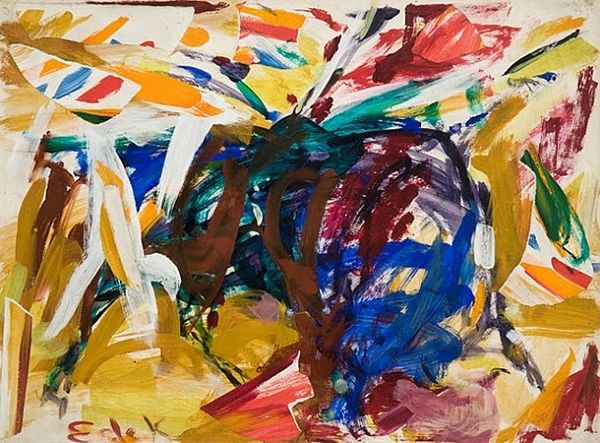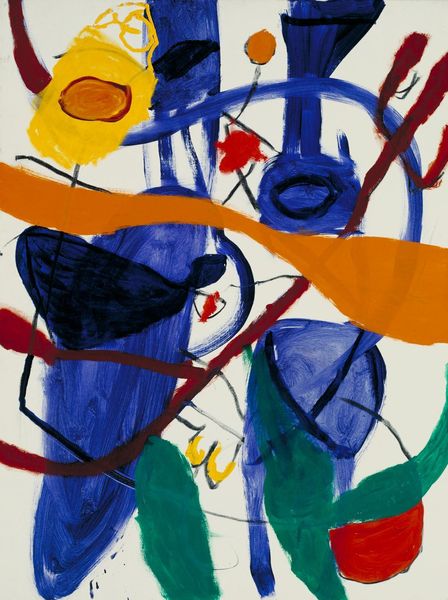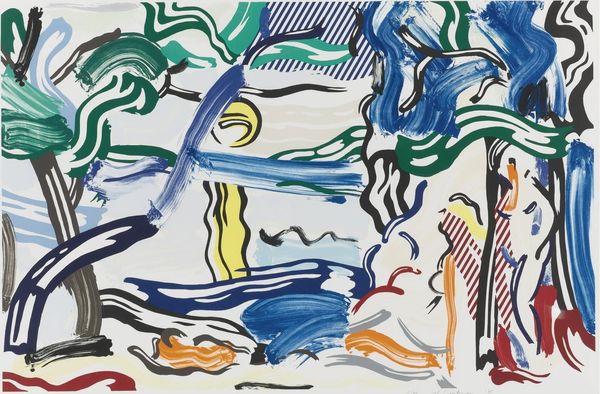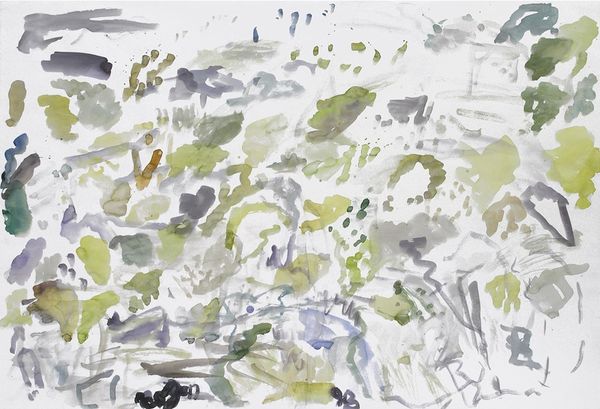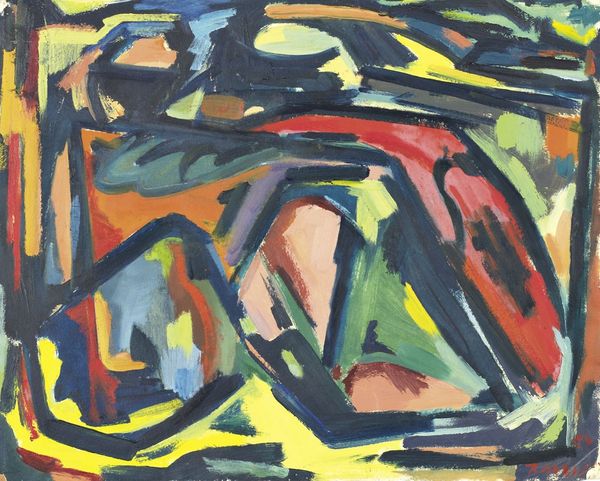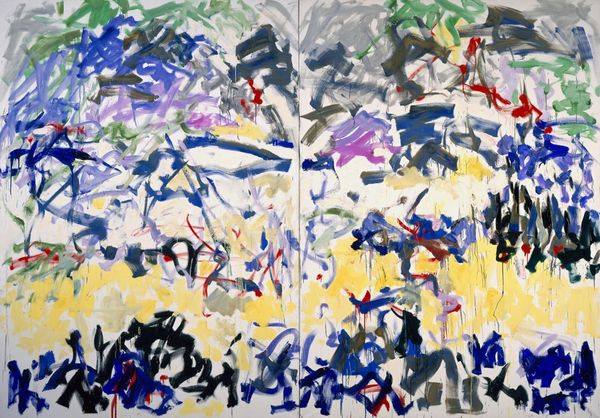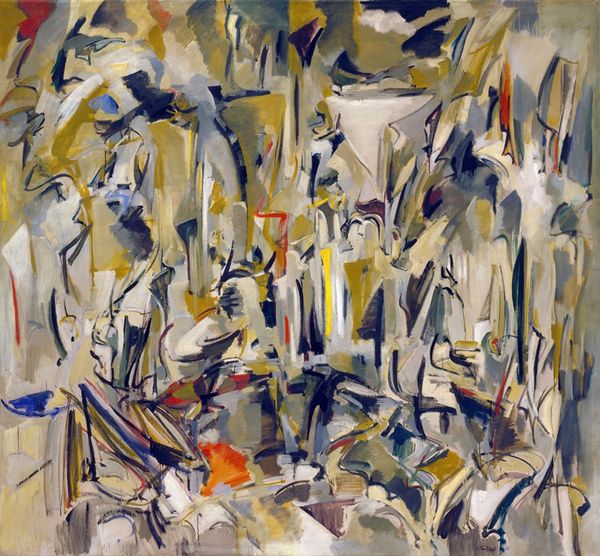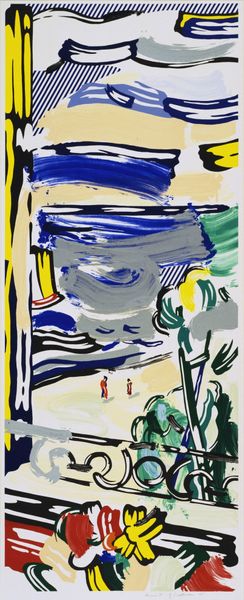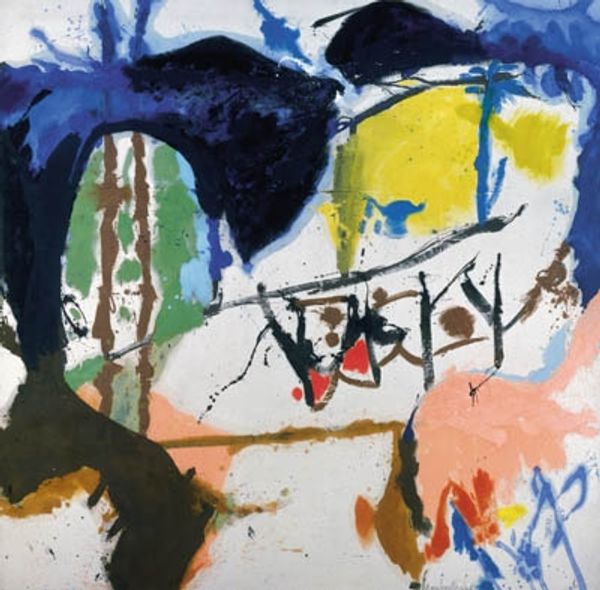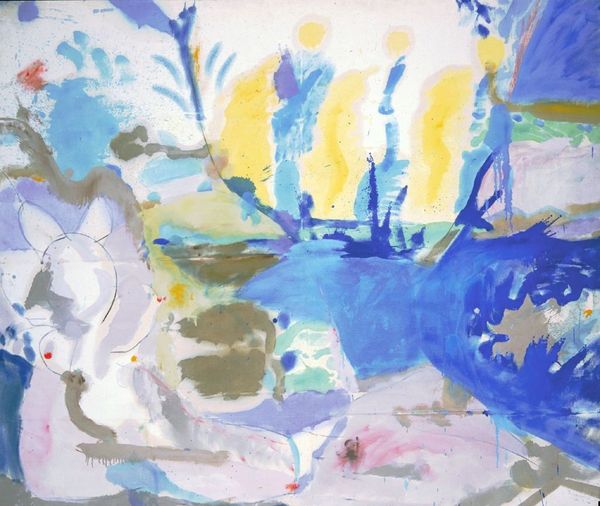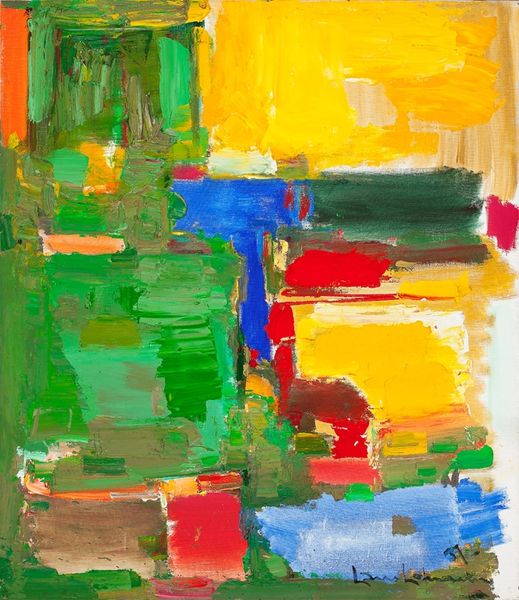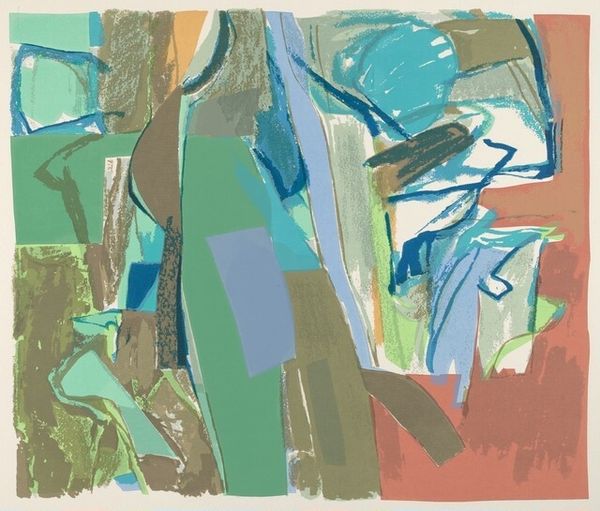
Sailboats through the trees 1984
0:00
0:00
roylichtenstein
Ludwig Forum für Internationale Kunst, Aachen, Germany
Dimensions: 157.5 x 177.8 cm
Copyright: Roy Lichtenstein,Fair Use
Editor: This is "Sailboats through the Trees" by Roy Lichtenstein, created in 1984. It's quite different from his pop art pieces that I’m familiar with. The brushstrokes feel so expressive, almost chaotic, and the colours, while still bold, are more muted. It looks… almost Fauvist? What do you see in this piece? Curator: That’s an insightful initial response! While Lichtenstein is most famous for his Pop Art, remember that artists rarely remain static. Consider this work in the context of Neo-Expressionism, a movement that emerged in the late 1970s as a reaction against the cool detachment of Minimalism and Conceptual art. We see a return to subjective experience and emotionally charged content. Where do you see the hints of Pop Art sensibility mixed with the emotional mark-making of expressionism? Editor: Well, the subject matter – sailboats and trees – seems fairly traditional, but the way he's rendered them feels detached, almost like a comic book version of Impressionism. It’s as if he's both embracing and critiquing the history of landscape painting, right? Curator: Exactly! And remember, Lichtenstein always worked with pre-existing images and styles. He's appropriating and re-presenting, making us question the nature of originality, the relationship between high and low culture, and the construction of artistic meaning itself. In a way, it also speaks to how male dominated and white dominated the history of painting has been until fairly recently, because he's doing it without any obvious emotion or meaning. It makes it quite the opposite, in a way! Editor: That makes so much sense. He’s not just painting sailboats, he’s making a statement about the whole artistic process! Curator: Precisely. So how would you situate this piece within Lichtenstein’s broader artistic practice now? Editor: I see now that it’s not just a stylistic detour, but a continuation of his engagement with art history through the lens of popular culture and critical theory. Very subversive! Curator: Indeed. It's all about interrogating those dominant narratives.
Comments
No comments
Be the first to comment and join the conversation on the ultimate creative platform.

